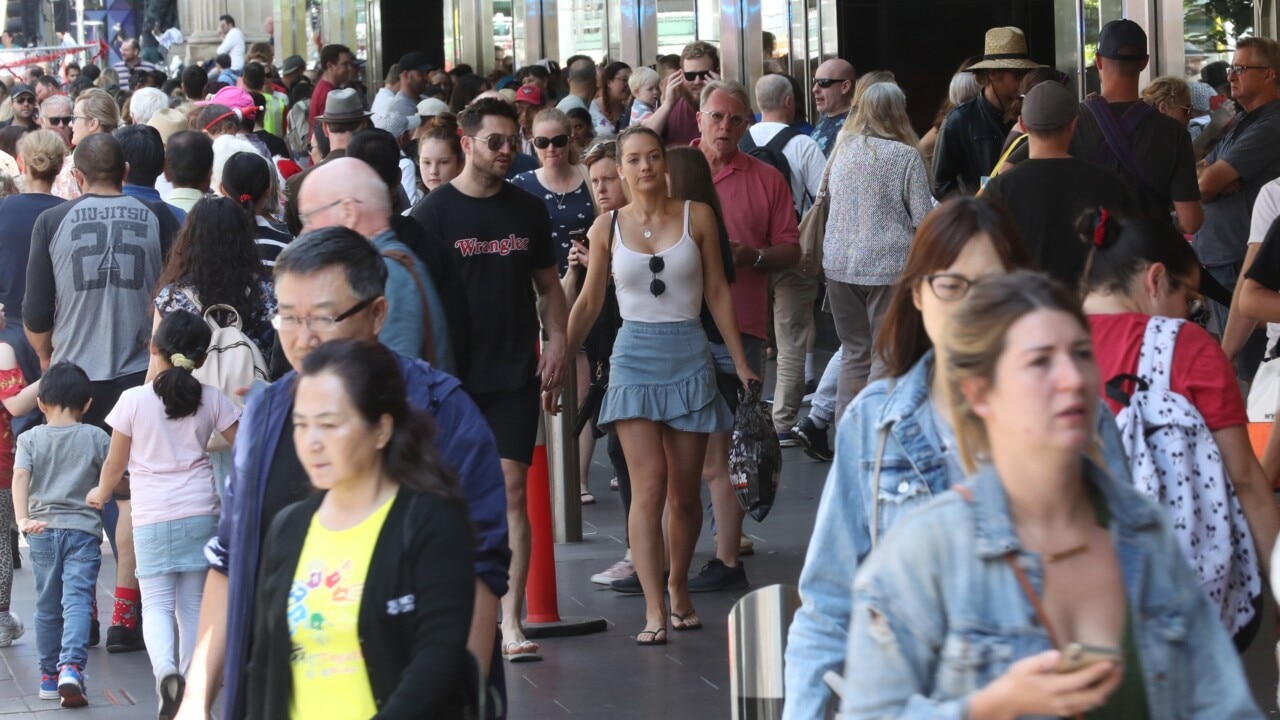September retail spending comes in hot ahead of Reserve Bank’s interest rate call
Record immigration helped deliver an unexpected bounce in retail turnover, as shoppers headed to department stores but cut back on a beer at the pub amid the cost-of-living crunch.

A record spike in immigration has contributed to the biggest growth in retail turnover since January as the nation spent up big at department stores in September, increasing the odds that the Reserve Bank will be forced to lift interest rates next Tuesday.
Data from the Australian Bureau of Statistics shows total retail turnover rose 0.9 per cent in September compared to 0.2 per cent in August. This was more than double the 0.3 per cent increase forecasted by markets.
Turnover on an annual basis was up 2 per cent in the 12 months to September compared to expectations of 1.2 per cent.
UBS economist George Tharenou said that a key factor supporting consumer spending growth is the record boom in immigration, with temporary visa holders now accounting for about 10 per cent of the population of 2.6 million following the arrival of 500,000 in the past year.
“For population, growth is around the fastest in 50 years,” he said. “This is adding to inflation pressure in the near-term, especially via rents. Over time, this will improve labour supply, and help to ease some of the tightness in the labour market; but for now the bigger impact is boosting demand.”

The stronger-than-expected bounce in retail turnover has all but cemented in the eyes of economists that the RBA will lift the cash rate by 25 basis points when it meets on November 7, with the odds greater than 60 per cent at this stage.
“The September retail data today reinforces our view the economy is surprisingly resilient, and adds to the case to hike in November. Indeed, if this continues, it adds to the risk of an additional RBA hike of 25 basis points to 4.60 per cent in February 2024,” Mr Tharenou said.
Most industries recorded growth in September, with department store spending up 1.7 per cent, followed by household goods and other retailers, which lifted on the shift to allow Pharmaceutical Benefits Scheme medicines to be dispensed for 60 days at a time.
Spending on clothing, footwear and personal accessory retailing firmed by 0.3 per cent.
ABS head of labour statistics Ben Dorber said while the rise in September was the largest since January, subdued spending for most of 2023 means underlying growth in retail turnover remains historically low.
“The warmer-than-usual start to spring lifted turnover at departments stores, household goods and clothing retailers, with more spending on hardware, gardening, and clothing items,” he said.
Food retailing rose 1 per cent following two consecutive monthly falls, while cafes, restaurants and takeaway food services were flat after being notably higher during the year. Retail turnover growth was up in all states and territories, led by a 1.8 per cent rise in Tasmania.
While retail turnover has increased by 2 per cent in nominal terms, this was against the backdrop of a 2.5 per cent growth in population in that period, suggesting that households were in fact spending less.

ANZ economists said this indicated underlying weakness in the retail sector, with spending growth expected to remain soft until a lift in 2024 as real household incomes grow.
Data from Accenture’s FiftyFive5 arm showed household spending intentions of going to the pub, donations, gambling and takeaway were down by as much as 13 per cent in the 12 months to September. Instead, those households reported spending 50 per cent more on utilities, groceries and petrol.
Accenture retail lead Tom Priestley said households had been forced to prioritise spending with the cost-of-living crunch forcing many to divert funds to higher living expenses.
“People are absolutely still choosing to spend, but the way they’re going about it is very different,” he said.
“We are seeing the deferral or avoidance of a purchase. While you can’t down trade a banana, you can 100 per cent opt to buy a cheaper TV than one that is $4000.”
Travel and holiday spending though jumped 12 per cent in the year, which Mr Priestley said was a sign that Australians were prepared to cut back elsewhere to ensure they could still travel in the wake of the pandemic and amid other uncertainties.
Mr Priestley said baby boomers was one demographic that was continuing to spend big with the cohort of mostly retirees largely immune from interest rate rises given that they were likely to be free of a mortgage.
Spending on cafes and restaurants remained robust as Mr Priestley said going out for breakfast was considered a treat for many and unlikely to break the bank in the same way a larger discretionary purchase would.






